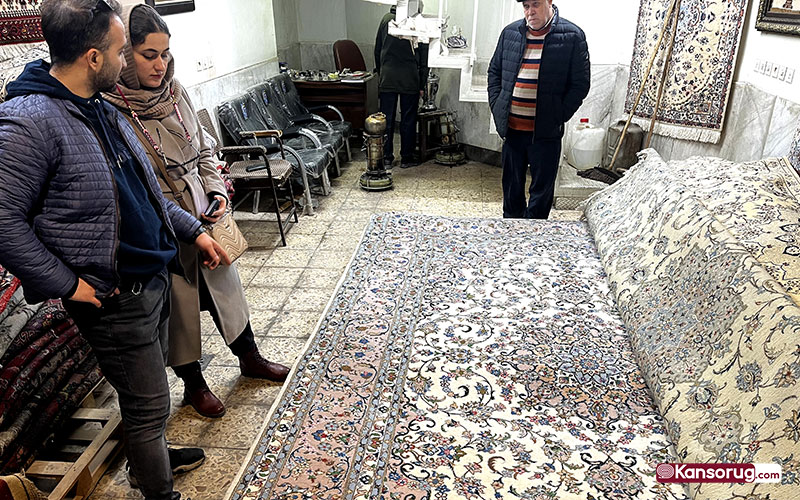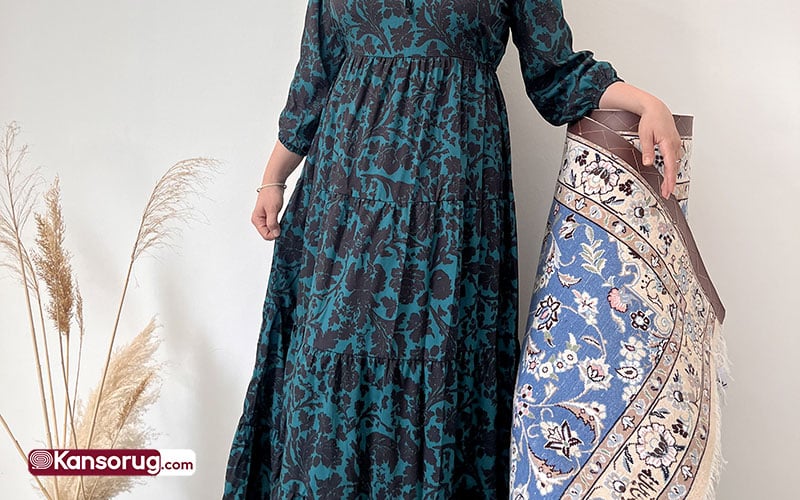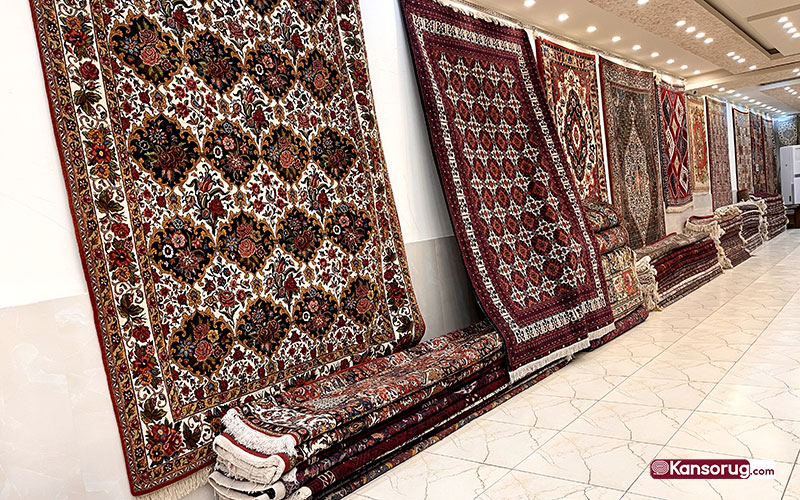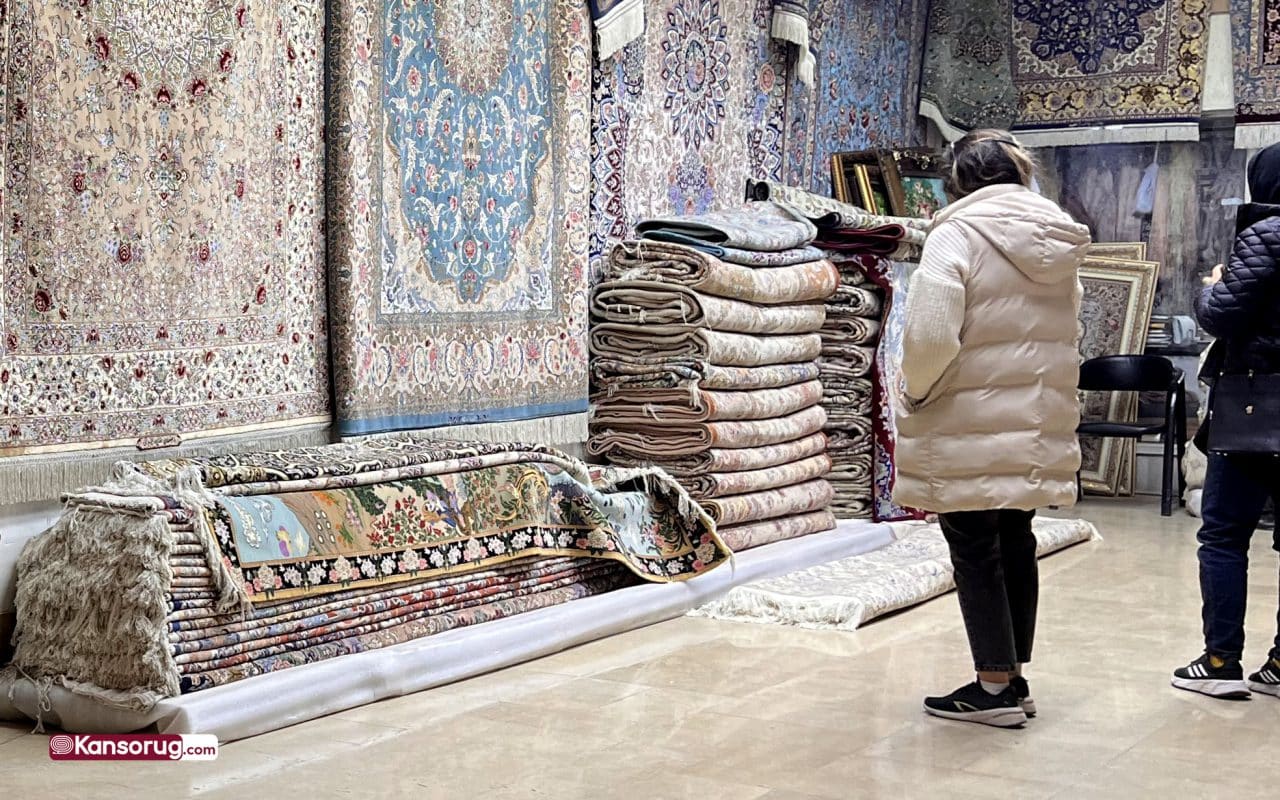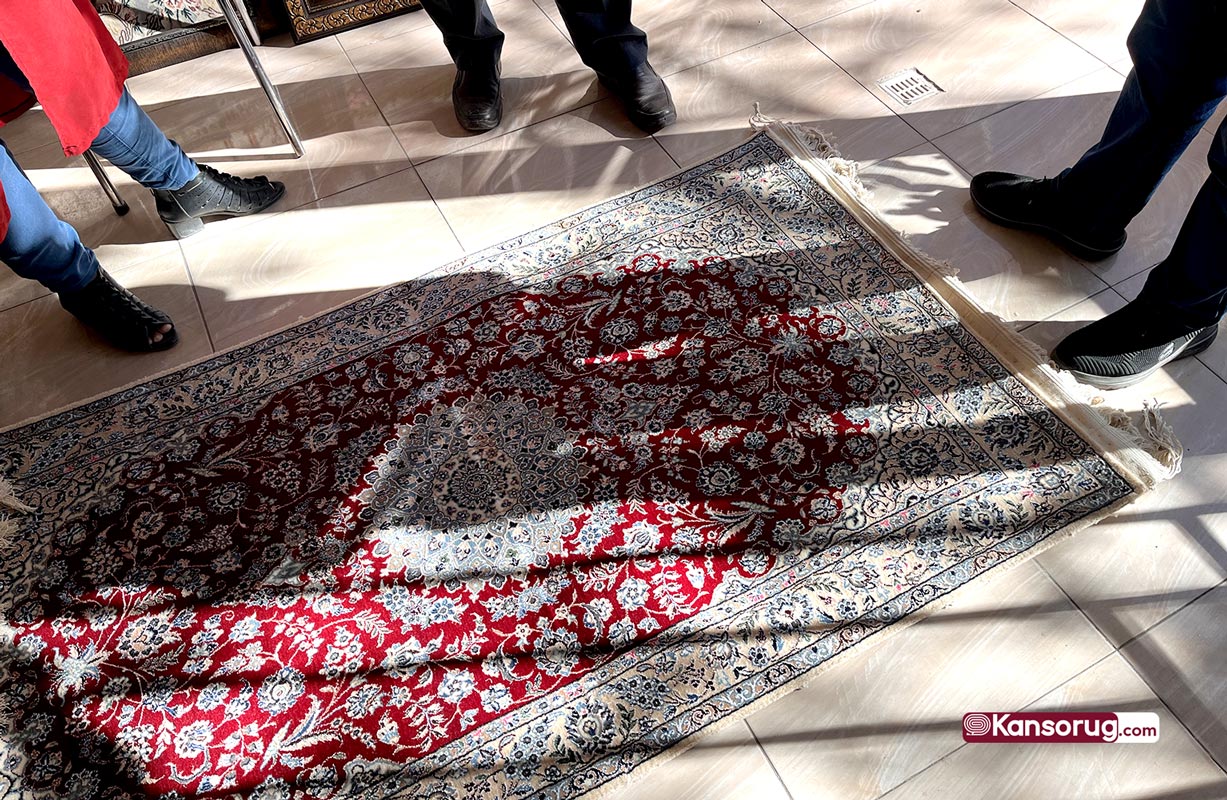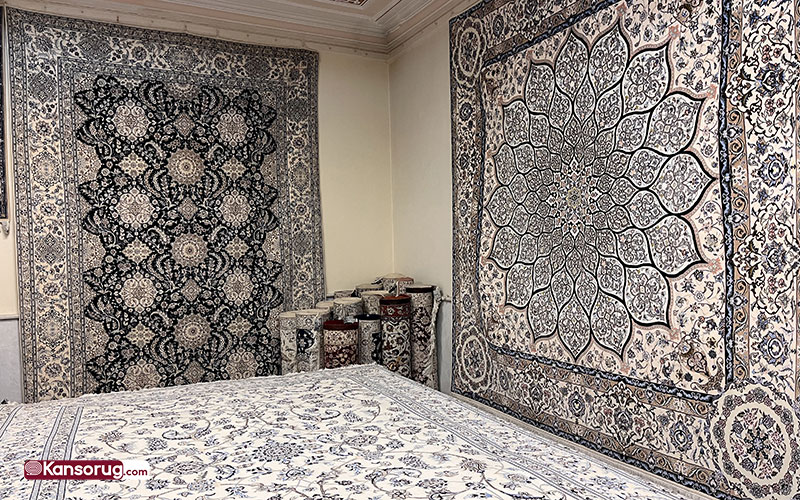How Do I Know What Carpet to Buy? Which Type of Carpet Is Best?
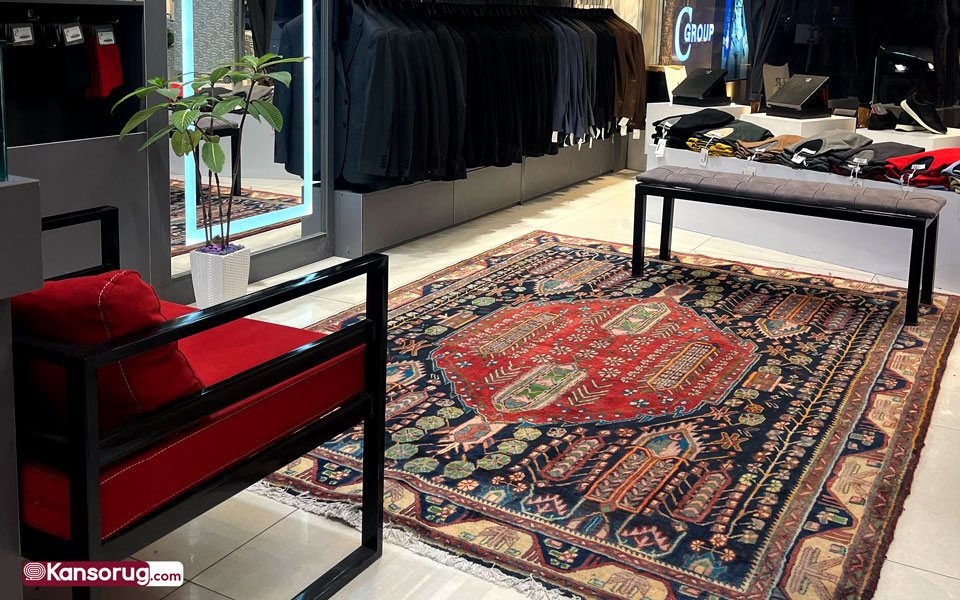
When I’m asked at the time of purchase, 'Which carpet is better? Machine-made or hand-woven? Turkish or Persian?' I often think of Paula, one of our customers, who was torn between choosing Indian and Persian carpets. After showing her detailed pictures and discussing various factors, she finally chose a hand-woven red carpet. Now, her warm and kind family has an authentic piece that will remain valuable for years to come. Although she had a specific budget, her preferences and tastes were the best guides in her decision. This is a common question for many buyers searching for the perfect living room rugs for their families. Which type of carpet is best? How do I choose carpeting? What carpet is most durable? How can I identify a high-quality carpet? What are the most popular carpet choices? What is the ultimate luxury carpet? Can carpets be cleaned?
A home without flooring feels incomplete, but a home adorned with the right carpet can truly transform a space. I recently had a surprising encounter in a clothing store. A stunning Persian rug caught my eye and instantly elevated the entire shop's ambiance. That's when I realized the profound impact a carpet can have on a space.
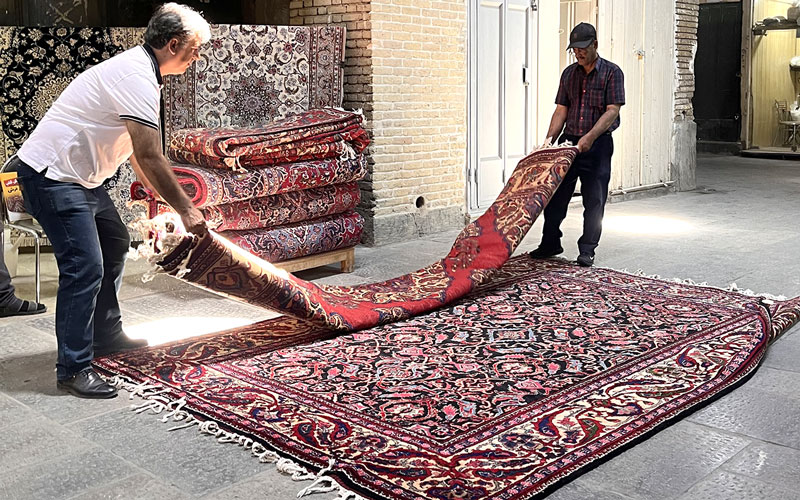
Iran Traditional Carpet Market
Which type of rug is best for the bedroom, living room, or high-traffic family room? To choose the perfect carpet for your living room, children's room, office, bedroom, high-traffic areas, or even as a gift for friends and loved ones, three key filters can guide you to the right choice. We've simplified these filters into three steps to help you find the best flooring.
First, decide between hand-woven and machine-made carpets. Second, among the world's hand-woven carpets, which one stands out as the best? Finally, how do you choose the right handmade carpet for you?
In this easy-to-understand yet detailed article, join us as we explore the best carpet brands based on customer experiences and feedback!
In This Blog...
ToggleFirst Step: Which is Better Hand-Made or Machine-Made Rug?
Your home's decor and layout should guide your choice between a machine-made or hand-woven carpet. I often reassure buyers of machine-made carpets about their easy maintenance due to durable polyester fibers that can withstand multiple washes. However, this comparison is misleading.
Luxury brands like Gucci and Louis Vuitton produce high-quality, handcrafted items. Unfortunately, the market is flooded with counterfeit products bearing these famous logos.
Let's compare the advantages of each type of rug, machine-made or hand-woven rug.
Feature | Machine-made Carpets | Hand-woven Carpets |
| Durability and color fastness | Dependent on quality | Dependent on quality; can last decades |
| Pile | Can cause allergies due to synthetic fibers | Less pile, generally hypoallergenic |
| Abrasion resistance | Dependent on quality and brand | Dependent on quality and brand |
| Stain resistance | Similar susceptibility to stains | Similar susceptibility to stains |
| Moisture resistance | More resistant | Less resistant |
| Sunlight resistance | Susceptible to damage | Susceptible to damage |
| Aesthetic appeal | Mass-produced designs | Unique, often handcrafted designs |
| Fashionability | Trends quickly | Timeless appeal |
| Design and color variety | Wide range | Wide range, with potential for customization |
| Dimensions and sizes | Various options available | Various options available |
| Cleaning and maintenance | Easier to clean and maintain | Requires specific care |
| Cost | Generally more affordable | Wide price range, from affordable to luxury |
| Value over time | Decreases in value | Can increase in value, especially for high-quality pieces |
| Materials | Synthetic fibers (polyester, acrylic...) | Natural fibers (wool, silk...) |
| Production process | Machine-woven in a short time | Hand-woven, time-consuming process |
| Health considerations | Potential for allergies | Generally hypoallergenic |
Second Step: Finding the Perfect Handwoven Carpet: Which Type of Carpet is Best?
If, like us, you find yourself drawn to the charm of hand-woven art over machine-made alternatives, and you want your home to reflect a piece of your soul, untouched by the industrial world, then a hand-woven carpet is your perfect choice. But with so many options, how can you be sure that the handmade carpet you choose is the best?
Let’s simplify the decision with a few key factors.
First, it’s important to know that the best hand-woven carpets in the world are Persian carpets. The land of Iran, historically known as Persia, has inspired carpet weaving across many nations—from India, Afghanistan, and Pakistan to Türkiye and Morocco. But which ones truly stand out? How can you verify authenticity and explore the full range of options?
Let’s delve into the top six countries producing handmade carpets, briefly exploring the history and unique characteristics of each:
1. Iran: The Pinnacle of Handmade Carpets
- Famous Cities: Tabriz, Isfahan, Kashan, Nayin, Qom
- Features:
- Intricate, unique, and varied designs with motifs of flowers, bushes, animals, and geometric shapes.
- Use of high-quality wool and silk, combined with stable and attractive natural colors.
- History: Carpet weaving in Iran dates back to the 5th century BC, with organized production beginning in the 16th century. The art of Persian carpets has since inspired many other nations.
- Advantages:
- Superior quality, long-lasting for generations, and world-renowned.
- Original and diverse designs, natural dyeing, and a price range from affordable to luxury.
- Excellent investment value.
- Disadvantages:
- Requires special care and maintenance, sensitive washing, and comes with a high price in some brands.
- Complex authenticity verification and a time-consuming weaving process.
2. Türkiye: A Relic of the Ottoman Era
- Famous Cities: Caesarea, Oshak, Harike, Sparta, Girne
- Features:
- Geometric and floral designs in vivid, contrasting colors, using wool and cotton.
- History: Carpet production in Türkiye began in the 13th century, deeply influenced by Iranian and Ottoman cultures.
- Advantages:
- Attractive designs, more affordable than Persian carpets, and high durability.
- Suitable for everyday use, with a faster weaving process.
- Disadvantages:
- Variable quality, limited designs, and the use of chemical dyes in some cases.
- Less valuable as an investment, and faster depreciation.
3. India: A Fusion of Cultures
- Famous Cities: Kashmir, Agra, Jaipur, Mirzapur, Varanasi
- Features:
- Designs inspired by Persian and Turkish carpets, with a mix of natural and chemical colors.
- Use of wool, cotton, and silk.
- History: Carpet weaving in India began in the 16th century with Mongol support, influenced by Persian, Mongolian, and English cultures. Indian carpets are globally popular for their affordability.
- Advantages:
- Reasonable prices, diverse designs, and suitable for various decor styles.
- Skilled craftsmanship and the use of natural materials.
- Disadvantages:
- Variable quality, lower durability than Persian carpets, and the possibility of staining.
- Requires more care, and value may decrease over time.
4. Afghanistan: Tradition Woven into Every Thread
- Famous Cities: Herat, Kabul, Balkh, Kandahar, Mazar-e-Sharif
- Features:
- Traditional and nomadic designs with natural colors, using high-quality local wool.
- History: Afghan carpet weaving began in the 17th century, influenced by Persian and Turkish arts.
- Advantages:
- Authentic traditional designs, high durability, and the use of natural colors.
- Reasonably priced with good wool quality.
- Disadvantages:
- Limited design options, a lengthy weaving process, and restricted access to global markets.
- Variable quality and the need for special care.
5. Pakistan: A Craft Honed Over Centuries
- Famous Cities: Lahore, Karachi, Peshawar, Multan, Faisalabad
- Features:
- Traditional designs inspired by Persian and Turkish carpets, using wool and cotton.
- History: Carpet weaving in Pakistan began in the 18th century, heavily influenced by Iranian and Afghan cultures. Pakistani carpets are well-known for their reasonable prices and acceptable quality.
- Advantages:
- Affordable, attractive designs, and diverse in size and style.
- Faster production process.
- Disadvantages:
- Lower quality compared to Iranian and Turkish carpets, limited design options, and the need for special care.
- Often considered a less durable copy of Persian and Turkish designs.
6. China: Where Tradition Meets Innovation
- Famous Cities: Beijing, Tianjin, Ningxia, Gansu, Shanxi
- Features:
- Traditional Chinese designs are inspired by rich cultural and artistic heritage, using wool, cotton, and silk.
- History: Carpet weaving in China started in the 19th century and quickly became a significant craft.
- Advantages:
- Unique designs, reasonable prices, and high durability.
- Suitable for modern decor and the use of quality materials.
- Disadvantages:
- Variable quality, limited design options, and the use of chemical dyes.
- Lack of originality in some designs, with some stages of production machine-assisted.
Notice: As mentioned in the New York Times article, it's often advisable to purchase branded carpets from their country of origin to ensure authenticity, quality, and potential access to unique designs or materials. Read more.
Third Step: Making the Right Choice: Selecting Your Ideal Persian Carpet
In the third step, we're here to simplify everything! We first considered whether a machine-made or hand-woven carpet is better. In the second step, we explored the best carpets in the world. Now, it's time to choose the right option.
When selecting a Persian carpet for your home, you might feel overwhelmed by the variety in design, quality, and size. Whether you are decorating a modern or traditional space, you can rely on expert guidance to help you choose the best option. We offer free advice on selecting and shipping handmade Persian carpets from Iran, ensuring you find the perfect fit for your home.
Persian carpets come with a broad range of prices and are a solid investment due to their durability and enduring appeal. They are a benchmark for other handwoven carpets globally, admired for their designs, patterns, and craftsmanship. The key questions to consider are how to select the best Persian carpet, where to buy it from Iran, and which carpet will be a worthwhile investment for you.
But the main questions remain: How do you choose the best Persian carpet? Which Persian rug stands out? How can you buy a Persian carpet directly from Iran? How do you know which Persian carpet is worth investing in? And where can you find a Persian rug that meets your needs?
Choosing the Perfect Persian Handwoven Carpet
Selecting a handwoven carpet, especially a genuine Persian one, can be both a delightful and challenging experience. With so many designs, colors, sizes, and prices to choose from, finding the right carpet requires understanding the unique qualities each type offers. This guide is here to help you navigate your options in a simple, friendly way—it's easier than you might think!
Key Factors in Choosing an Iranian Handwoven Carpet
1. What’s Your Budget?
- Luxury Carpets: If you have a higher budget, consider handwoven carpets from Qom, Isfahan, and Nain. These carpets are known for their delicate designs and high knot density. For example, Qom silk carpets with Shah Abbasi patterns or Nain carpets with soft colors and geometric designs are excellent choices.
- Economical Carpets: If you’re looking for something more affordable, urban handwoven carpets like those from Nain, Ardakan, Yazd, and Kashan are good options. Rural or nomadic carpets with simpler designs, such as small fish (Herati), mihrabi, or orange patterns, also offer great value.
2. Do You Have a Specific Weight and Density in Mind?
- Heavy Carpets: Carpets with high knot density, such as those from Kashan and Tabriz, are usually heavier and more durable.
- Light Carpets: Silk carpets or those with fewer knots per square inch tend to be lighter, making them more suitable for smaller spaces.
3. What Design and Color Do You Want?
- Traditional Designs: If you love classic designs, look for motifs like Slimi, Boteh, Lakh, and Teranj, or floral and animal patterns. Isfahan, Kashan, and Nain are renowned for their variety of traditional designs.
- Modern Designs: For a contemporary look, consider geometric patterns in bright, vibrant colors. Nain and Arak carpets often feature beautiful geometric designs.
- Color: Choose a carpet color that complements your home’s interior. Light colors and simple designs are ideal for small spaces, while darker colors and busier patterns work well in larger rooms.
Notice: Certain Persian carpet brands can feature a wide range of designs. For instance, Isfahan and Nain carpets may include tree patterns, floral and bush motifs, as well as geometric designs.
4. Is Size and Fit Important?
- Carpet Size: The size of your carpet should match the room. Large carpets suit big spaces, while smaller rugs are perfect for cozier areas. For example, Nain carpets come in a wide range of sizes—from 40 cm to nearly 100 square meters!
- Compatibility with Furniture: Your carpet should harmonize with your furniture and other décor. The timeless appeal of Persian carpets means they rarely go out of style.
Notice: Some carpet brands offer a variety of sizes, including specific shapes such as circles, ovals, or octagons.
5. Where Do You Live?
- Humid Areas: In wetter climates, carpets with short piles and high knot density are ideal since they absorb less moisture.
- Cold Areas: In colder regions, wool carpets with high density are perfect for insulation and warmth.
Notice: Persian carpets are typically suitable for all climates and are known for their lasting quality.
6. Are You Looking to Invest?
- Investment Carpets: Persian handwoven carpets are a smart investment. Carpets with original designs and high knot density retain their value over time.
- Everyday Use Carpets: For daily use, opt for carpets that offer good quality at a reasonable price.
Notice: Nearly all Persian carpets appreciate in value over time.
7. Your Personal Taste Matters!
Ultimately, the most important factor is your personal preference. Choose a carpet that resonates with you and makes you feel comfortable in your space.
Notice: The vast variety of handwoven Persian carpets caters to all tastes. Simply share your preferred design and color with an expert guide, and they will help you find the perfect carpet.
Comparing Popular Iranian Carpet Designs and Brands
- Busy Designs: Tabriz, Kerman, and some nomadic carpets are known for their intricate and detailed patterns.
- Simple Designs: Nain, Kashan, and Ardakan carpets often feature simpler, more subdued designs.
- Geometric Designs: Nain, Kashan, and Arak are famous for their geometric patterns.
- Floral and Bird Designs: Isfahan and Qom carpets are celebrated for their beautiful floral and bird motifs.
- Slimi Designs: Tabriz and Isfahan carpets often include complex Slimi designs.
Top 10 Persian Carpet Brands
- Isfahan Carpets: World-renowned for floral, bird, Boteh, and Shah Abbasi patterns. These carpets are known for their vibrant colors and high knot density.
- Nain Carpets: Famous for geometric designs, soft colors, and fine rug textures. Nain carpets are highly valued for their elegance and beauty.
- Kashan Carpets: Known for their wide variety of designs and colors, high knot density, and superior quality.
- Qom Carpets: Globally recognized for silk floral carpets with delicate and classic designs.
- Tabriz Carpets: Characterized by intricate designs, natural colors, and high knot density.
- Kerman Carpets: Renowned for their simple designs and natural colors.
- Ardakan Carpets: Noted for geometric designs and neutral colors.
- Yazd Carpets: Typically feature simple, monochromatic designs, ideal for modern spaces.
- Mashhad Carpets: Known for hunting scenes and floral motifs.
- Sarouk Carpets: Famous for their geometric designs and vibrant colors.
Last Line:
Handwoven carpets come in many varieties, but Persian carpets have always stood out for their timeless beauty and durability. They effortlessly elevate your decor, adding warmth and character, and making every viewer and guest admire your home. The best part of my job as a carpet lover and seller is receiving that first reaction from customers. When, after a journey of several days, their carpet arrives from the heart of Iran and becomes part of their home decor, and they send me messages filled with gratitude, happiness, and satisfaction—those moments bring me the greatest joy. I hope you'll be next!
Please rate Stellar
Your page rank:
Related Posts
How To Identify A Handwoven Rug?
-
Posted by
Bahador Mir
- 0 comments
Hand-woven or Machine-made Carpet? Are Handmade Rugs Better?
-
Posted by
kansorug_admin
- 3 comments
Area Rugs: Adding Comfort, Style, and Functionality to Your Home
-
Posted by
kansorug_admin
- 4 comments
Spot a Real Deal: Identifying Persian Handwoven Carpets
-
Posted by
kansorug_admin
- 0 comments
How Handmade Carpets Are Priced and Evaluated?
-
Posted by
mohammadreza saberi
- 0 comments
Why Persian Rugs Are Expensive and Valuable: Unveiling the Artistry
-
Posted by
mohammadreza saberi
- 0 comments

